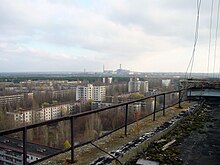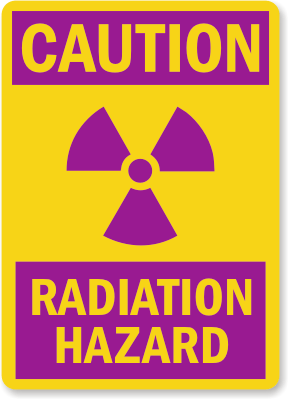I have wanted to say some things about the situation at Fukushima Nuclear Power Plant for awhile. The content you see in the Media are just so bogus. First they want to prattle on about a melt down and the chances of an explosion “like Chernobyl”.
I scream at the television, “The reactors scrammed or were off line”. Ten Mile Island and Chernobyl were both online when their catastrophes occurred. Shutting down 10 mile was their big challenge. Chernobyl was an atomic explosion that sent material 4 or 5 miles in the air. Their big challenge was preventing a China Syndrome. Fukushima was always going to be a local nonthreatening event. Dramatic – Tragic – Fool hearty but nonetheless local.
The media want to prittle prattle along about reactor types and containment vessels. They never talk about powerhouse design. Reactors do one thing they generate steam. That is it. And that is why I am opposed to nuclear power in general. There are so many simpler and safer ways to generate steam that nuclear power is a joke. Once promoted by national governments because they wanted to piggy back their nuclear weapons programs on to “local power programs”. So we will use US powerplants an example of power house design and then compare disasters.
Yes, 10 powerplants in the US use the Mark 1 reactors like what were in 4 of the reactors at Fukushima. But in the US there is “triple containment” and “plain water” steam turbine loops. That means that when 10 Mile Island malfunctioned they simply vented a bunch of radioactive steam which immediately killed about 100 people and eventually killed about 300 babies and then turned the reactor off (scrammed). The temperatures soared to 5000 degress, the fuel melted, the cooling system worked and there it sits today with a puddle of melted fuel in the bottom of the reactor vessel. That should have been the end of Nuclear Power as we know it. At Fukushima they have “double containment” powerhouses that uses radioactive water to drive their turbines. All nuclear reactors have to be shielded or sheathed for people to be able to get close to them to operate them. So even Chernobyl had a “single” containment vessel. In Fukushima they had that and a containment pad. Actually the pad was kind of ingenious. It consists of varying layers of concrete, steel, boron and lead. This was supposed to make a China Syndrome impossible because it would self seal the waste if it tried to melt through. BUT they used that argument to actually cheapen and make more dangerous their powerhouse designs. They provided no exterior containment system and they drove their turbines with radioactive steam. Additionally they built the cooling systems on one pad and their power generation systems on a separate pad guaranteeing that the cooling systems would break in an earthquake. So yes, there were explosions at Fukushima but not at the dynamite tonnage level that happened at Chernobyl. Fukushima was like a fire cracker.
While Fukushima is a local event that was a disaster waiting to happen, Chernobyl was a momentous international disaster waiting for someone to pull the trigger. It was a graphite reactor with a single containment wall, sitting by a lake right at the water table with an inadequate cooling system. Pull the trigger they did. The point being the Media does not understand Nuclear Power any better than the public does and yet this “magic genie” produces 20% of this countries electricity. Things have gotta change.
http://en.wikipedia.org/wiki/Chernobyl_disaster
Chernobyl disaster
From Wikipedia, the free encyclopedia
Chernobyl disaster

The nuclear reactor after the disaster. Reactor 4 (center). Turbine building (lower left). Reactor 3 (center right).
|
| Date |
26 April 1986 |
| Time |
01:23:45 (Moscow Time UTC+3) |
| Location |
Pripyat, Ukrainian SSR, Soviet Union, now Ukraine |

Location of Chernobyl nuclear power plant

The abandoned city of Pripyat with Chernobyl plant in the distance

Radio-operated bulldozers being tested before use

Abandoned housing blocks in Pripyat
The Chernobyl disaster was a nuclear accident that occurred on 26 April 1986 at the Chernobyl Nuclear Power Plant in the Ukrainian SSR (now Ukraine). An explosion and fire released large quantities of radioactive contamination into the atmosphere, which spread over much of Western Russia and Europe. It is considered the worst nuclear power plant accident in history, and is one of only two classified as a level 7 event on the International Nuclear Event Scale (the other being the Fukushima I nuclear incident, which is considered far less serious and has caused no direct deaths).[1] The battle to contain the contamination and avert a greater catastrophe ultimately involved over 500,000 workers and cost an estimated 18 billion rubles, crippling the Soviet economy.[2]
The disaster began during a systems test on 26 April 1986 at reactor number four of the Chernobyl plant, which is near the town of Pripyat. There was a sudden power output surge, and when an emergency shutdown was attempted, a more extreme spike in power output occurred, which led to a reactor vessel rupture and a series of explosions. These events exposed the graphite moderator of the reactor to air, causing it to ignite.[3] The resulting fire sent a plume of highly radioactive smoke fallout into the atmosphere and over an extensive geographical area, including Pripyat. The plume drifted over large parts of the western Soviet Union and Europe. From 1986 to 2000, 350,400 people were evacuated and resettled from the most severely contaminated areas of Belarus, Russia, and Ukraine.[4][5] According to official post-Soviet data,[6][7] about 60% of the fallout landed in Belarus.
The accident raised concerns about the safety of the Soviet nuclear power industry, as well as nuclear power in general, slowing its expansion for a number of years and forcing the Soviet government to become less secretive about its procedures.[8][notes 1]
Russia, Ukraine, and Belarus have been burdened with the continuing and substantial decontamination and health care costs of the Chernobyl accident. Thirty one deaths are directly attributed to the accident, all among the reactor staff and emergency workers.[9] A UNSCEAR report places the total confirmed deaths from radiation at 64 as of 2008. Estimates of the number of deaths potentially resulting from the accident vary enormously: the World Health Organization (WHO) suggest it could reach 4,000;[10] a Greenpeace report puts this figure at 200,000 or more;[11] a Russian publication, Chernobyl, concludes that 985,000 excess deaths occurred between 1986 and 2004 as a result of radioactive contamination.[12]
:}
More tomorrow.
:}

























